Is it possible to carry gas to the garage: features of gasification of garage spaces
Dreaming of a multifunctional garage? Maybe you are an avid car enthusiast and have repeatedly thought about the gasification of your parking box? Want to know more about this? So is it possible to put gas into the garage, how to do it right, and how much money you have to spend - there are answers to these questions.
We decided to pay attention to the issue of gas supply in domestic buildings. The whole article is devoted to the use of gas in the garage, including theoretical and practical aspects. For those who do not have a car and a garage, the following will also come in handy, and possibly in the near future.
Let's face it, arranging small objects like garages seems simple only at first glance. Their very location can cause difficulties in planning communications, and it is not at all necessary that they should be located far from civilization. Gasification is requirements, restrictions and a large number of actions. Therefore, we structured the information so that there were fewer questions with each new line.
The content of the article:
- Features of gasification of the garage
- Procedure for obtaining technical specifications
- Difficulties connecting to the gas network
- Current requirements for garage spaces
- Phased connection of gas to the garage
- Price range in different regions of Russia
- Gas heating requirements from cylinders
- Conclusions and useful video on the topic
Features of gasification of the garage
According to SNiP 2.04.08-87 "Gas supply" in paragraph 6.32, gas equipment can be placed in buildings located separately from or adjacent to residential buildings. Permission owners receive in design organizations.
The authorized structure takes into account the presence of a gas branch for the implementation of such intentions, geographical factors of the area. For premises in individual buildings, the same criteria apply as for living rooms. The feasibility of projects and calculations depends on the gas operating specialized company.
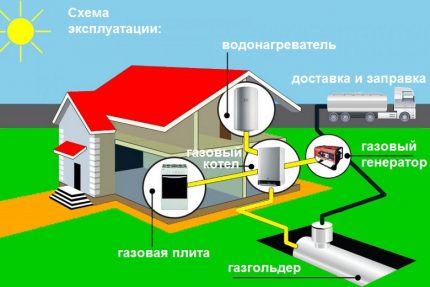
A connecting branch to a non-residential or building under construction is installed according to an individual project on the basis of an agreement between the owner of the facility and the gas service. The active process starts after the customer receives technical conditions (TU).
In this sense, the procedure is as follows:
- Submit a request for technical specifications.
- Get TU.
- Draw up a written application for an agreement to join communications.
- Sign a document to connect.
- Get a warrant for commissioning a non-residential building.
- Sign the act of connecting to gas utilities.
The operational features of garage spaces and their compatibility with gas appliances cause the need for regulation and standardization.
The owners of the garages install gas boilers, stoves, burners, gas heat guns, but this can be hindered by the small size of buildings, the lack of windows and other rooms, in addition to the main one.
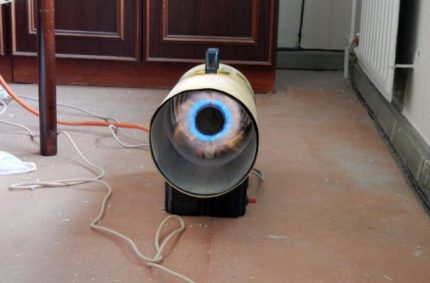
Do not strive to in any case gain access to main pipe, because there are also alternatives with cylinders and tanks for autonomous gasification.
Procedure for obtaining technical specifications
Technical conditions for the gas supply of the garage will be issued by the gas service at the place of ownership of the object.

The owner of the premises should submit the application itself to draw up the contract, as well as the following documentation:
- documents of ownership of land;
- an identity card or an official document confirming the authority of a representative;
- topographic plan of the territory with construction;
- data sheet;
- gas distribution agreement;
- garage plan with smoke and ventilation ducts.
Upon delivery, the customer receives the pressure parameters at the point of connection to the gas network, the minimum and maximum indicators of gas use per unit time, a description of the features of the system and allowable gas flow.
The owner of the garage with the technical specifications in his hands has the right to appeal to the court if he is refused connection. The decision is usually made in favor of the plaintiff. The opportunity to appeal to the court is also used in case of refusal to issue technical specifications.
Difficulties connecting to the gas network
It will be easiest if the gasification program includes a residential building, in which or next to which there is a garage. Sites in large cities or nearby will be more likely to receive gas. There are no direct legal prohibitions on driving gas to the garage in principle - both for the use of gas boilers and for the use of other appliances.
At the same time, there are still theoretical grounds for refusal. They are the specifics of the terrain and distance.
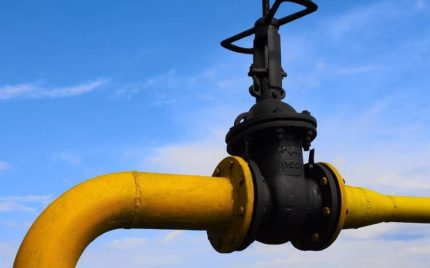
The connection of unprepared structures to gas networks is accompanied by insurmountable difficulties. If the site of the new building was old and already gasified, and there is no need to lay a branch, changes to the existing project documentation for the object will be needed.
A schematic plan will be issued by the Bureau of Technical Inventory (BTI) of the local administrative unit. The problem is that there should be an area on the drawing, and the BTI should take measurements only after the presentation of property rights to the new premises.
Current requirements for garage spaces
June 6, 2019 entered into force Rules for the design of gas supply systems SP 402.1325800.2018, which were approved on the basis of the order of the Ministry of Construction and Housing and Public Utilities No. 789 / pr dated 12/05/2018.
The 50 mm margin between the sides of the plate and the meters is still valid. As before, a 40-cm height interval should be observed from the same appliances to the burners. New standards also do not prohibit the installation of double-glazed windows in rooms with boilers, but only if the glass structure allows them to be knocked out without much effort.
Connecting a gas stove in the garage
Only airtight hoses made from safe materials are suitable for this and other equipment. The length of the connecting elements should not exceed 1.5 meters.
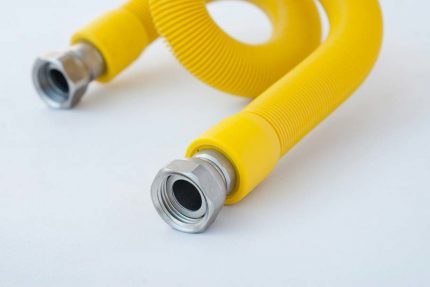
Gas will definitely not be connected if the new requirements for stoves are not complied with:
- for gas stoves under a canopy, use protection against blowing;
- the stove must have a gas-control system, and a dielectric coupling from stray current between the tap and the hose;
- the gas cooking appliance must comply GOST 33998;
- at least 1 m of margin should be left from the slab to the opposite wall.
Garage plates, as well as for residential premises, should only be purchased from certified manufacturers along with supporting documents for these devices.
Placement of heating boilers
Do not install a gas boiler / water heater / boiler in the same space with the vehicle. The solution is the furnace compartment. For a finished or attached building with a garage, the basic and additional requirements apply. Norms of the 2nd type will have to be checked with the local gas service.
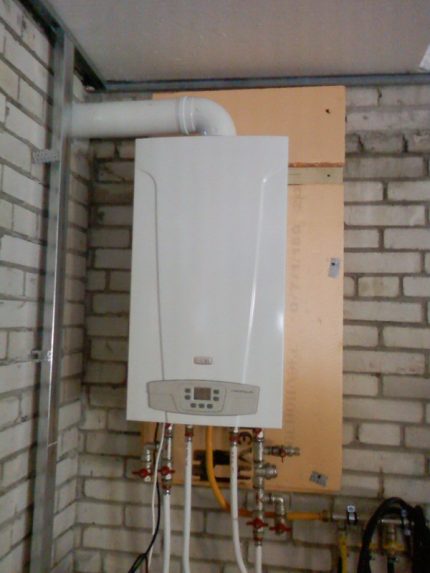
Installation of the boiler in the garage will be acceptable if the building meets the following parameters:
- non-freezing structure with an area of at least 4 m² and a height of 2 m or more;
- the door opens outward and its width is at least 80 cm;
- walls are made of non-combustible or slightly combustible materials;
- There is a window for ventilation and light, approximately 1 m² in size.
The garage must be present supply and exhaust ventilation. Her condition should be checked with a piece of paper. In a working system in the supply ducts the air will repel the leaf, and in the exhaust ducts it will attract.
Phased connection of gas to the garage
The process consists of 6 steps, and the first step is to choose the option of gas supply. They select it based on the heated area, the volume of the room, the average residence time and the number of people simultaneously in the garage.
Subsequently, they draft technical specifications. The local gas service will review the application within 1 month. For buildings more than 200 m from the local pipe, alternative connection options will be needed.
At the next stage, a technical connection is made to the gas system. The insert is performed by gas service specialists. The consumer should rely on expenses in the amount of 25-50 thousand rubles. The cost of work includes the price of inset and laying.
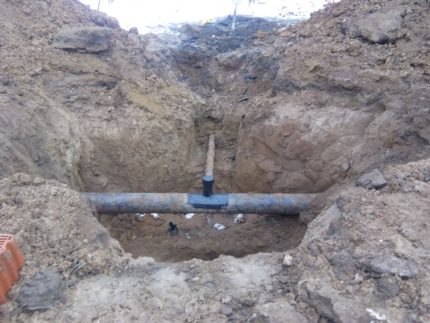
The most expensive component may be the project of gasification of the garage. All equipment and planned gas communications of the garage are applied to the circuit. Each appliance, as well as the chimney, is "set" at the exact location.
The procedure includes 2 alternatives:
- Contact the gas distribution company. It will be relatively cheap, but the lead time is 3-6 months.
- Order a scheme at a private design office. The situation in terms of price and timing will be exactly the opposite.
Then they begin to install gas-using installations such as boilers, stoves, gas heat guns, etc. At this stage, customers turn to gas specialists and stack contracts to carry out work.
After installing gas appliances, the consumer still will not receive fuel. Workers of the gas distribution organization must first check the safety of the devices, make sure that the operating conditions are met. The owner of the garage for this makes an application and waits for about 2 weeks until the specialists arrive at the place.
Upon arrival, gas workers will instruct in safety regulations and seal the meter. The check will be confirmed by the receipt, and soon it will be possible to speak about the connection of gas to the garage as a fait accompli.
Price range in different regions of Russia
It is no secret that the cost of services differs depending on the territory. Given this factor in general, and the convenience of the location of objects, residents of different parts of the country receive bills with a 10-fold difference in numbers.
The collection of documentation and the receipt of technical specifications will “take” from 8 to 50 thousand rubles. The gasification project will be done in 3-20 thousand. Each meter of wiring from the main pipe will cost 2-5 thousand rubles.
Only one insert costs up to 10-15 thousand in national currency. For the exit of the inspector and the assessment of the availability of equipment, one will have to pay 1-2 thousand rubles. - quite a bit against the general background.
Gas heating requirements from cylinders
Alternatively, you can use bottled gas. The containers should be kept in a closed metal cabinet for storing gas cylinders.
For its location, you need to choose a place as far as possible from heating devices and flammable appliances.
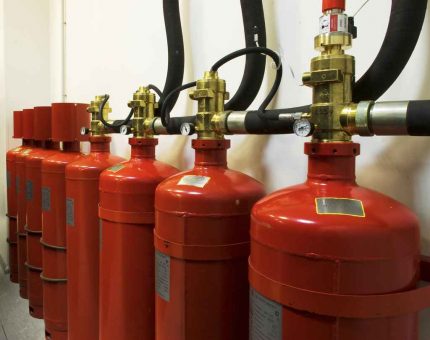
You can not put the module with cylinders at the floor level, because in this case it will not be possible to notice the gas leak in time and solve the problem.
Conclusions and useful video on the topic
Introductory material with a description of the principles and algorithms for gasification of buildings on the site:
Garage heating using gas equipment, a description of the operation of devices and nuances in the arrangement of the premises:
The possibilities of garage spaces are expanding not only in terms of engineering work. Car owners are also trying to control the temperature inside the garage. They do this for the sake of the vehicle itself, working conditions, and also - for the ability to properly store parts, chemicals and other accessories.
To have gas in the garage, you must comply with the requirements for the premises and get the technical specifications. Then the owner is waiting for work with documents for the project. The room must be gasified, but only if there are no technical obstacles.
We are sure that you want to share your opinion with others. Especially for this, provided the form below. Perhaps you have your own view on the problem of gasification of garages, or you want to talk about your situation. Describe the main difficulties, if not everything went smoothly.

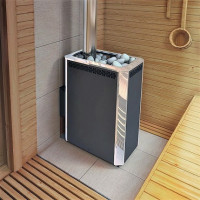 Gas in a non-residential building: features of gasification of non-residential premises
Gas in a non-residential building: features of gasification of non-residential premises 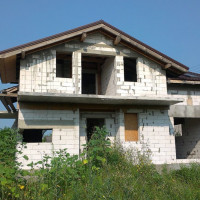 Is it possible to connect gas to an unregistered house: features of the connection and design of “unfinished”
Is it possible to connect gas to an unregistered house: features of the connection and design of “unfinished” 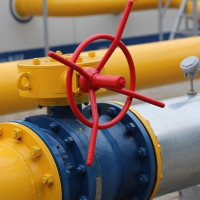 Gasification of industrial facilities: options and norms for gasification of industrial enterprises
Gasification of industrial facilities: options and norms for gasification of industrial enterprises  Gas on the border of the site - what does it mean? Features of connecting to an existing gas pipeline
Gas on the border of the site - what does it mean? Features of connecting to an existing gas pipeline  What is a situational plan of a land plot for gasification and how to draw it up
What is a situational plan of a land plot for gasification and how to draw it up 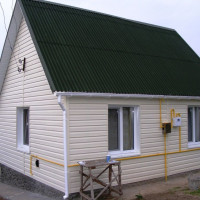 Is it possible to close a gas pipe with siding: the rules and subtleties of masking a gas pipeline
Is it possible to close a gas pipe with siding: the rules and subtleties of masking a gas pipeline  How much does it cost to connect gas to a private house: the price of organizing gas supply
How much does it cost to connect gas to a private house: the price of organizing gas supply  The best washing machines with dryer: model rating and customer tips
The best washing machines with dryer: model rating and customer tips  What is the color temperature of light and the nuances of choosing the temperature of the lamps to suit your needs
What is the color temperature of light and the nuances of choosing the temperature of the lamps to suit your needs  Replacement of a geyser in an apartment: replacement paperwork + basic norms and requirements
Replacement of a geyser in an apartment: replacement paperwork + basic norms and requirements